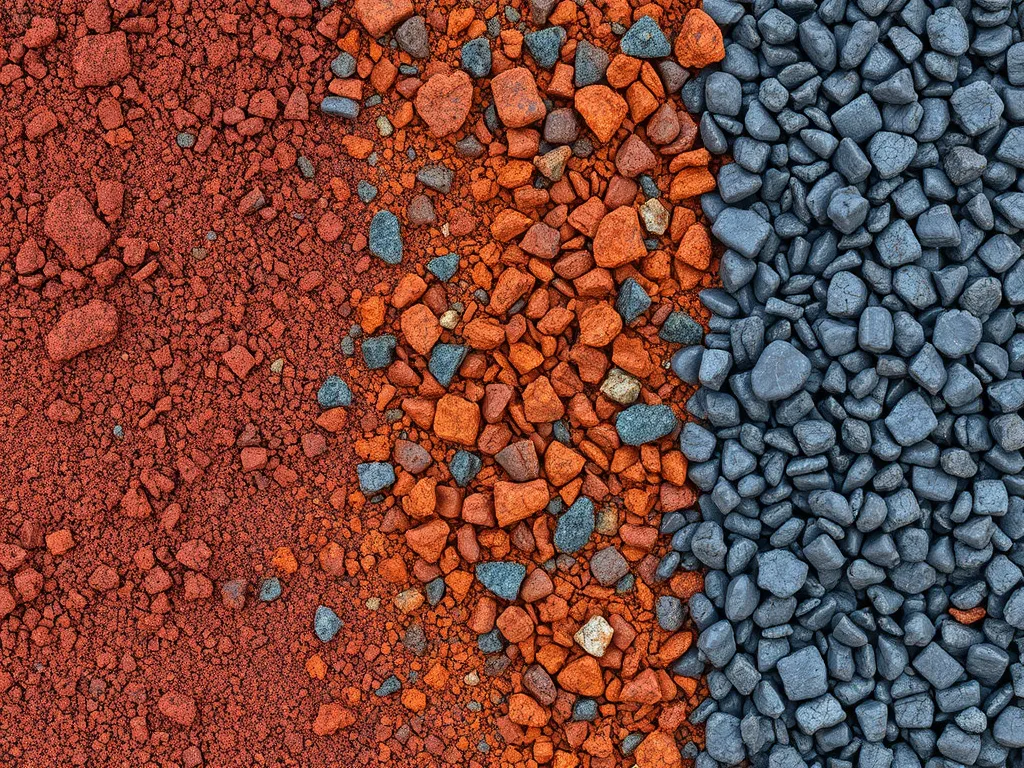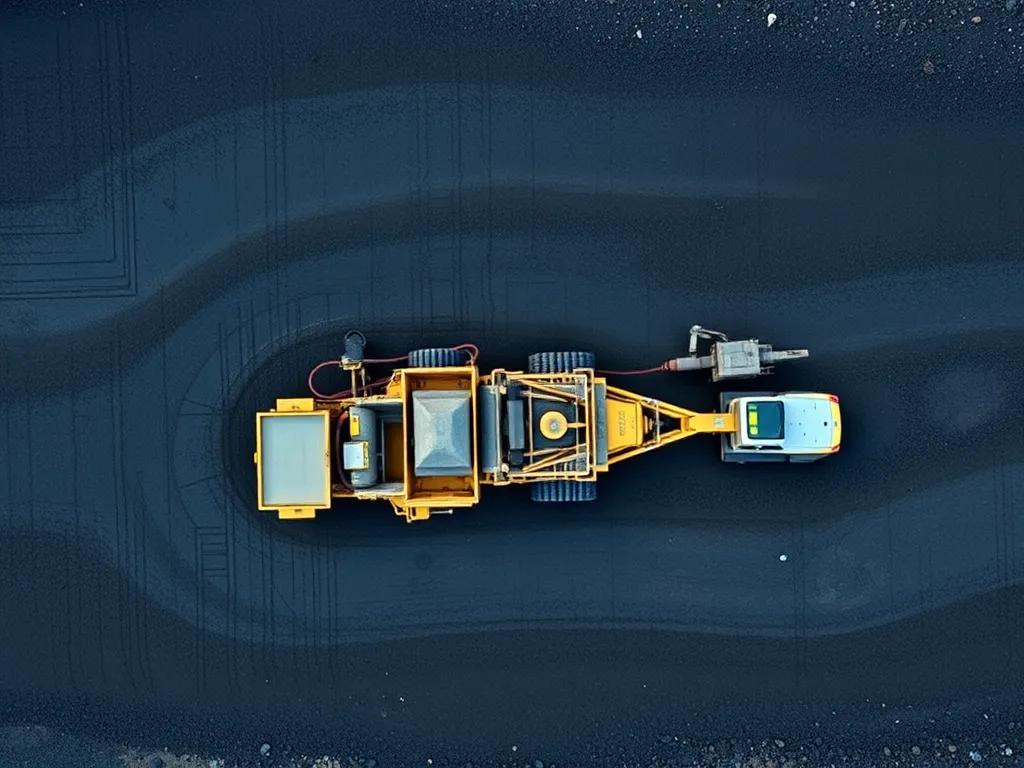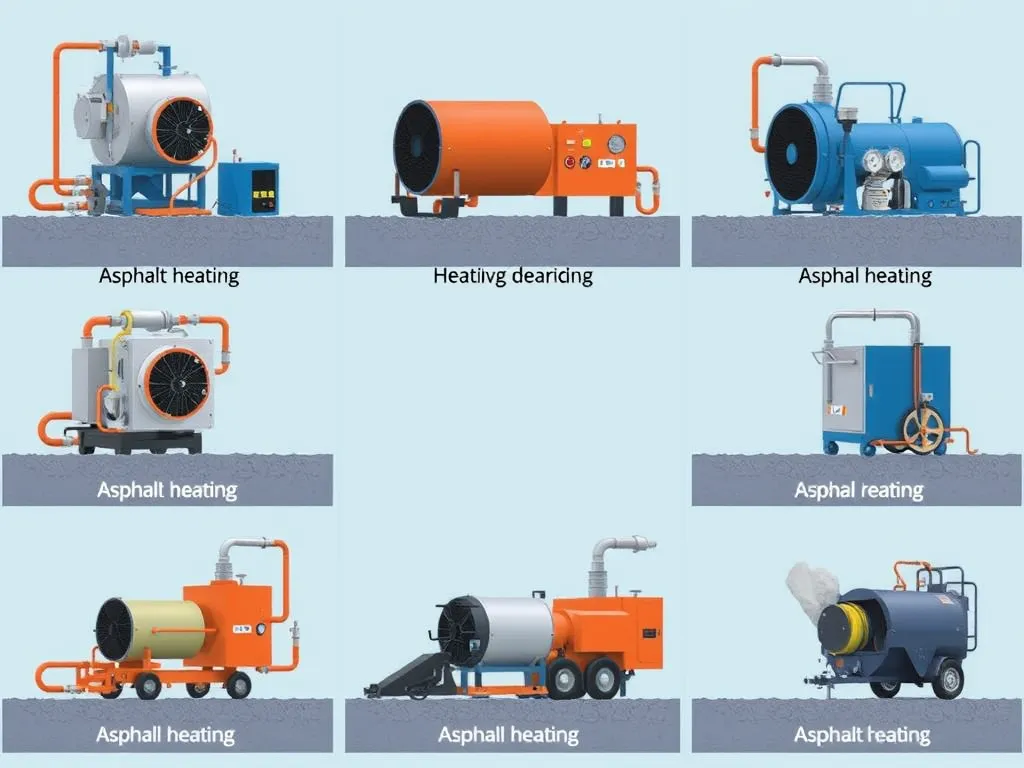Asphalt Type Selection Guide: Choosing the Right Mix for Your Project
Published on: August 10, 2025 | Last Updated: April 14, 2025
Written By: George Voss
An asphalt type selection guide matches your project’s needs to the best pavement mix. It compares materials like Hot Mix Asphalt (HMA) for highways, Cold Mix (CMA) for potholes, or porous asphalt for drainage. Each type varies by installation temperature, aggregate size, and binder content. Pick wrong, and you risk cracks in freezing winters or rutting under heavy trucks. Get it right, and your surface lasts 15-20 years with proper care.
This article walks through seven asphalt types and three grading systems. Learn why Type 3 works for driveways (3/8” aggregate) but fails for interstate highways needing PG 76-28 binder. Compare costs: HMA costs $100-$200 per ton installed, while recycled asphalt cuts prices by 25%. Discover how Warm Mix (WMA) slashes production temps to 230°F versus HMA’s 300°F, saving fuel. Get clarity on chip seal vs. cape seal for low-traffic roads.
Contents
Introduction to Asphalt Selection
Picking the correct asphalt type directly impacts your project’s success. Not every mix works for every job. Roads, driveways, parking lots, and runways each need specific blends to handle unique demands. Climate, traffic patterns, and budget also shape which mix performs best.
Why Asphalt Type Matters
Using the wrong asphalt leads to cracks, rutting, or drainage failures within months. For example, porous asphalt handles stormwater but fails under heavy truck traffic. Cold mix works for winter potholes but degrades quickly in summer heat. Proper selection balances durability, function, and cost.
| Issue | Common Cause | Solution |
|---|---|---|
| Thermal cracking | Low-grade binder in cold zones | Use PG 58-28 or lower temperature binder |
| Rutting | Soft asphalt under heavy loads | High-stability HMA with polymer modifiers |
| Drainage failure | Non-porous mix in wet regions | Permeable asphalt with 16-22% void space |
Performance Graded (PG) binders—rated by temperature tolerance—prevent climate-related damage. PG 64-22 suits zones with highs up to 64°C and lows down to -22°C. Heavy traffic roads need higher binder content (5.5-7.5%) than driveways (4.5-5.5%). Costs vary too: WMA cuts energy use by 20%, while RAP mixes save $15-$30 per ton.
Next, we’ll break down the seven primary asphalt mixes used today.
Types Of Asphalt Mixes
Your asphalt selection guide starts with mix types. Each serves unique purposes based on composition, climate, and project needs.
Hot Mix Asphalt (HMA)
Produced at 300-350°F, HMA is the go-to for high-traffic areas. It uses PG (Performance Graded) binders rated for specific temperature ranges.
Applications and Benefits
Ideal for highways, airports, and heavy-load zones. Provides 15-20 years of service with proper compaction. Costs $100-$200 per ton installed.
Warm Mix Asphalt (WMA)
Mixed at 200-250°F, WMA cuts fuel use by 20-35%. Uses additives like zeolite or wax to improve workability.
Energy Efficiency and Uses
Reduces greenhouse gases by 15-30%. Perfect for urban roads and nighttime paving. Meets same durability standards as HMA.
| Mix Type | Production Temp | Key Advantage |
|---|---|---|
| HMA | 300-350°F | High durability |
| WMA | 200-250°F | Energy savings |
Cold Mix Asphalt (CMA)
Uses emulsified asphalt for ambient-temperature application. Sets slowly through water evaporation.
Temporary Repairs and Low-Temperature Applications
Patch potholes in winter (works down to 20°F). Costs $50-$80 per ton but lasts only 6-12 months.
Porous Asphalt
Contains 16-20% void space for drainage. Requires 18″ gravel base for optimal filtration.
Stormwater Management and Permeability
Handles 8-12 inches of rain per hour. Used in parking lots and low-speed roads to meet EPA stormwater regulations.
Asphalt Emulsion
Liquid mix of asphalt, water, and emulsifying agents. Cures as water evaporates.
Surface Treatments and Binding Solutions
Used for tack coats (0.05-0.15 gal/sy) and slurry seals. Extends pavement life 5-7 years at $0.50-$1.50 per square foot.
Chip Seal and Cape Seal
Chip seal: single layer of aggregate + emulsion. Cape seal: chip seal + slurry coat.
Cost-Effective Maintenance Options
Chip seal costs $1.50-$2.50 per sy vs $4-$6 for HMA. Lasts 4-7 years on residential roads with <500 ADT (Average Daily Traffic).
With mix types clarified, your asphalt grading guide comes next – where aggregate sizes and PG ratings determine long-term performance.
Now that you’ve compared asphalt types, the next step in your asphalt selection involves decoding grade classifications and their engineering specs.

Asphalt Grade Classification System
Asphalt grades determine performance under stress, weather, and weight. Two primary systems govern selection: numbered types (1-7) and letter grades (A-C).
Type 1, 2, 3, 4, 5, 6, 7 Asphalt
Numbered grades classify mixes by aggregate size. Type 1 has the finest particles (⅜” max), suited for thin overlays. Type 7 uses ½” stones for high-stress areas like truck lanes.
Differences in Aggregate Size and Durability
Larger aggregates boost strength but reduce workability. Type 3 (½” stones) handles moderate traffic at $3.50-$4.50 per square foot. Type 6 (¾” stones) withstands heavy loads but costs 15% more due to thicker lifts.
Type A, B, C Asphalt
Letter grades focus on binder content. Type A has 5-7% bitumen for flexible surfaces like driveways. Type C uses 7-9% binder for crack-resistant parking decks.
Binder Content and Application-Specific Grading
Higher bitumen percentages prevent raveling in cold climates. Type B (6-8% binder) balances cost and durability for suburban roads. Penetration grading (e.g., 60/70) specifies hardness levels for tropical vs. temperate zones.
Performance Graded (PG) Asphalt
PG binders match climate needs. A PG 64-22 rating means the mix performs between -22°F and 64°F. Superpave specifications align binder grades with regional temperature extremes.
Climate-Specific Temperature Ratings
Northern states use PG 58-28 for freeze-thaw cycles. Southern regions select PG 76-16 to resist rutting at 150°F pavement temps. Thermal cracking drops by 40% when PG grades match local weather data.
With grade systems decoded, the next step evaluates project-specific needs like traffic patterns and drainage demands.
Also See: Can You Pressure Wash Oil Stains Off Asphalt? Be Cautious
Key Factors for Asphalt Selection
Selecting the right asphalt mix demands balancing technical specs, environmental factors, and project goals. Let’s break down critical decision points.
Climate and Temperature Considerations
Asphalt performance hinges on local weather patterns. PG (Performance Graded) binders match temperature ranges: PG 64-22 works in zones with winter lows of -22°F and summer highs of 64°F. In desert climates, PG 76-28 resists rutting at 158°F pavement temps. Freeze-thaw cycles demand higher air voids (4-6%) to prevent thermal cracking.
Traffic Volume and Load-bearing Requirements
Calculate ESALs (Equivalent Single Axle Loads) to determine pavement strength. Residential streets handle 1,000-3,000 ESALs yearly; interstate highways face 30 million+. For heavy truck traffic, specify Type A asphalt (1.5-3% binder content) or polymer-modified mixes. Layer thickness jumps from 2-3 inches for driveways to 8-12 inches for industrial yards.
Project Type and Application
Each surface has unique needs. A grocery store parking lot prioritizes rut resistance, while a bike path focuses on smoothness.
Best Asphalt for Driveways vs. Highways
Residential driveways thrive with Type C asphalt (smaller aggregates) or Type 3 mixes for crack resistance. Highways demand Type A asphalt or PG 76-28 polymer blends to withstand 80,000 lb truck loads. Porous asphalt (18-25% void space) suits driveways needing stormwater drainage.
Budget and Long-term Maintenance
Initial costs vary widely: HMA runs $100-$200 per ton installed, while WMA cuts energy bills by 20%. RAP (Recycled Asphalt Pavement) blends trim material costs by 30% but may reduce lifespan. Plan for sealcoating every 3-5 years ($0.14-$0.25 per sq ft) to extend pavement life by 10-15 years.
Next, we explore how mix design methods like Superpave translate these factors into durable pavement recipes.

Asphalt Mix Design Methods
Choosing a mix requires knowing how asphalt formulas work. Two main systems shape modern pavement: Superpave and Marshall. Both impact asphalt grading, traffic capacity, and project lifespan.
Superpave System
Superpave (Superior Performing Asphalt Pavements) replaced old trial-and-error methods. This system links mix design to traffic loads and local climate. It uses PG (Performance Graded) binders rated for high and low temps—like PG 64-22 for zones with 64°C max and -22°C min.
Performance-Based Design Approach
Superpave tailors mixes using a gyratory compactor to simulate field compaction. Engineers input data: truck traffic (1 million vs. 10 million ESALs), annual air temps, and subgrade strength. Outputs include optimal binder content and aggregate angularity. This method cuts rutting by 40% on highways with heavy trucks.
Marshall Mix Design
Marshall methods still drive decisions for parking lots or low-speed roads. Focused on stability (load capacity) and flow (deformation), this approach tests 4-inch samples compacted with a Marshall hammer. Typical stability targets: 1,500 lbs for residential roads, 3,000+ lbs for industrial sites.
Stability and Flow Testing
Labs apply force at 2 inches per minute until samples fail. Stability above 1,800 lbs prevents rutting under cars; flow between 8-16 units avoids brittleness. Mixes with 5-7% binder content often hit this balance. High-traffic zones may need polymer-modified binders for extra strength.
Both design paths shape your asphalt selection chart. Next, find out how sustainability goals impact mix choices—from RAP percentages to warm-mix tech.
Environmental and Sustainability Considerations
Picking green asphalt options cuts waste, saves cash, and meets eco-rules. Builders and planners must weigh these factors early in the asphalt selection guide process.
Recycled Asphalt Pavement (RAP)
RAP reuses old asphalt chunks in new mixes. Up to 30% RAP blends meet specs for driveways, parking lots, and low-traffic roads. This swap slashes material costs by $8 per ton and keeps 90 million tons of waste out of dumps yearly.
RAP works best in base layers or surface courses with fresh binder. Use it in moderate climates where freeze-thaw cycles stay mild. Check local codes—some states mandate 15-20% RAP in public jobs.
Energy-efficient Production Methods
Warm Mix Asphalt (WMA) leads this shift. Made at 50-100°F lower temps than Hot Mix, WMA cuts fuel use by 20% and fumes by 35%. Plants now use foam tech, wax additives, or bio-binders to hit these gains.
New plants add solar heat or capture exhaust steam. These upgrades trim 12-18% off a mix’s carbon score. For LEED jobs or urban zones with strict air rules, these methods often tip the asphalt grade selection choice.
Smart asphalt material selection balances eco-goals with load needs and budgets. Next, let’s tackle common mix myths and user queries.

Frequently Asked Questions (FAQ)
What is the Difference Between Type 2 and Type 3 Asphalt?
Type 2 asphalt has coarser aggregates, typically used for medium traffic areas, while Type 3 features slightly finer aggregates suited for moderate to heavier loads. The choice affects the smoothness and durability of the pavement.
What is the Difference Between Type A and Type B Asphalt?
Type A asphalt contains a higher binder content (5-7%), making it more flexible and ideal for surfaces like driveways. Type B has a binder content of 6-8% and is designed for more durable surfaces such as suburban roads.
What is the Difference Between Type 3 and Type 6 Asphalt?
Type 3 asphalt uses ½” aggregates suitable for moderate traffic levels, while Type 6 utilizes larger ¾” aggregates designed for heavy loads, providing better strength under stress.
What Type Of Asphalt is Best for Residential Driveways?
Type C asphalt or Type 3 mixes are generally best for residential driveways due to their smaller aggregate sizes and better crack resistance, providing a smooth surface for light vehicle traffic.
Closing Thoughts
Choosing the right asphalt mix is a key step in ensuring the success and longevity of your paving project. Different asphalt types cater to varying needs, from heavy-duty highways to residential driveways.
Each asphalt variation—from Hot Mix Asphalt (HMA) to Porous Asphalt—offers unique advantages suited to specific applications. Understanding factors like climate, traffic volume, and budget allow for a more informed decision in asphalt selection.
For expert insights and tools to aid in your asphalt decisions, be sure to visit Asphalt Calculator USA. Equip yourself with knowledge to pave your projects successfully.
Useful References for You:
- American Association of State Highway and Transportation Officials (AASHTO). (2008). Mechanistic-Empirical Pavement Design Guide (MEPDG). Washington, DC: AASHTO.
- A Beginner’s Guide to Different Types of Asphalt Grades
- Mix Selection Guidance – Pavement Interactive
- Asphalt Pavement Mix Type Selection Guide [PDF]
- What Are The Different Types Of Asphalt Hot Mix?


